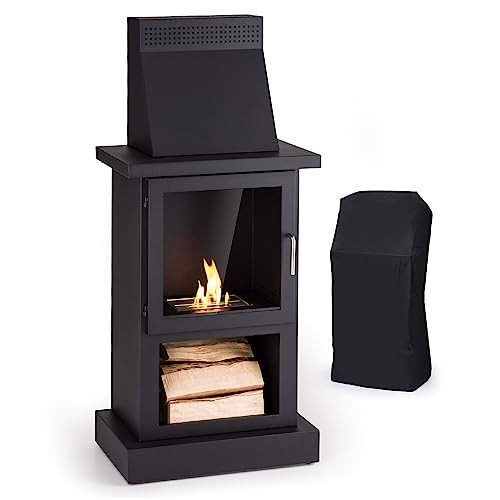The Fireplace: A Warm Embrace of Tradition and Comfort
Fireplaces have been an important part of human habitation for centuries, serving as a source of warmth, a gathering location, and a sign of comfort. While the modern variations may vary extremely from their ancient ancestors, the attraction of a fireplace endures. This article checks out the numerous aspects of fireplaces, including their history, function, types, and maintenance, while likewise dealing with frequently asked concerns.
The Evolution of Fireplaces
Fireplaces go back to prehistoric times when open flames were used for cooking, heating, and defense from wildlife. Over the centuries, fireplaces progressed from easy fire pits to the advanced renditions we see today. Here is a quick timeline of their evolution:
- Prehistoric Era: Cavemen utilized open flames for heat and cooking. Wind and smoke typically blew into residences.
- Middle Ages: Stone and brick fireplaces became common in homes and castles, including chimneys to carry smoke outside.
- Renaissance: Elaborately developed mantels emerged, and fireplaces became centers of social interaction.
- Industrial Revolution: Innovations in heating products resulted in a variety of styles and performances.
- Modern Era: The arrival of gas, electric, and bioethanol fireplaces supplied cleaner alternatives to traditional wood-burning units.
Table 1: The Evolution of Fireplaces
| Age | Attributes |
|---|---|
| Prehistoric Era | Open flames for heat and cooking |
| Middle Ages | Stone and brick structures with early chimneys |
| Renaissance | Elaborate mantels, social centers |
| Industrial Revolution | Diverse designs, arrival of brand-new materials |
| Modern Era | Gas, electric, and bioethanol choices |
The Purpose of a Fireplace
Fireplaces serve double purposes: they supply physical heat and develop an emotional environment. Homeowners often gather around the fireplace to bond, share stories, and take pleasure in a cozy setting. The radiance of a fire can be soothing, adding to a sense of relaxation and intimacy. Beyond individual satisfaction, fireplaces likewise use functional advantages, consisting of:
- Home Heating: Effective heat source, especially in colder environments.
- Increased Home Value: A well-designed fireplace can enhance the aesthetic worth of a home.
- Emergency situation Heating: In case of power outages, wood-burning fireplaces can serve as a vital heat source.
- Aesthetic Appeal: A centerpiece that contributes to interior design.
Types of Fireplaces
Today, fireplaces can be found in various styles and fuel types, accommodating a varied range of choices and settings. Here are some typical types:
Wood-Burning Fireplaces:
- Traditional fire pits
- Timeless masonry fireplaces
- Need considerable upkeep and chimney upkeep
Gas Fireplaces:
- Available in both direct vent and ventless varieties
- Simpler to use and maintain than wood-burning fireplaces
- Offer immediate heat with a flick of a switch
Electric Fireplaces:
- Offer associated heat sources without real flames
- Typically created to imitate traditional fireplaces
- Ideal for smaller sized areas and homes without a chimney
Bioethanol Fireplaces:
- Use bioethanol fuel, providing a sustainable alternative
- Require no ventilation and can be put anywhere
- Safe and easy to preserve
Table 2: Types of Fireplaces
| Type | Fuel Source | Functions | Upkeep Requirements |
|---|---|---|---|
| Wood-Burning | Wood | High atmosphere, heat source | Regular chimney cleansing |
| Gas | Gas or gas | Instant heat | Minimal, periodic servicing |
| Electric | Electrical power | Easy setup | Very low upkeep |
| Bioethanol | Bioethanol fuel | Ventless, portable | Low, primarily cleaning up |
Upkeep and Safety Considerations
Owning a fireplace involves specific responsibilities, specifically concerning its safe operation and long-term maintenance. Here are very important upkeep pointers and security guidelines:
Maintenance Tips:
- Annual Inspection: Always have your chimney and fireplace examined a minimum of as soon as a year by a qualified technician.
- Routine Cleaning: Clean out ashes and debris after each usage, and ensure the flue is open before starting a fire.
- Inspect for Cracks: Inspect masonry for cracks or damage to prevent structural issues.
- Usage Proper Fuel: Only use dry, skilled wood for wood-burning fireplaces; do not burn treated wood.
Safety Guidelines:
- Install Smoke Detectors: Ensure smoke alarm are practical, checking them month-to-month and replacing batteries as needed.
- Keep a Fire Extinguisher: Have one nearby, even if a fireplace is utilized occasionally.
- Monitor Flames: Never leave a fire ignored, and guarantee kids and pets are monitored around the fireplace.
Often Asked Questions (FAQs)
1. How can I lower smoke from a wood-burning fireplace?
To minimize smoke, use dry, skilled wood, and guarantee that your chimney is tidy and unblocked.
2. Is it safe to utilize gas fireplaces throughout a gas leakage?
Never ever utilize a gas fireplace throughout a gas leak. Right away evacuate the location and contact gas services for aid.
3. Can I install an electric fireplace myself?
Electric fireplaces are generally easy to install, but it is recommended to speak with experts to make sure safety and compliance with regional structure codes.
4. What is the very best type of fireplace for small areas?
Electric fireplaces or bioethanol models are often best for small spaces, as they do not need comprehensive ventilation or structural adjustments.
Fireplaces have transcended their initial function of offering heat to become treasured components of home design and household life. Best Fireplace Online stimulate memories of heat, celebrations, and togetherness while supplying functional benefits that boost modern living. By understanding the numerous types of fireplaces, their upkeep, and security practices, house owners can enjoy the timeless appeal of this cherished function for generations to come.

